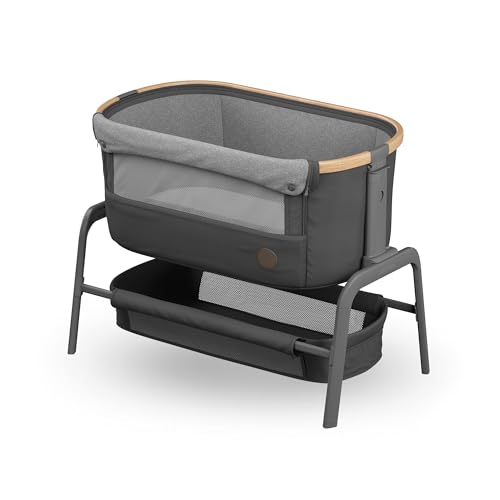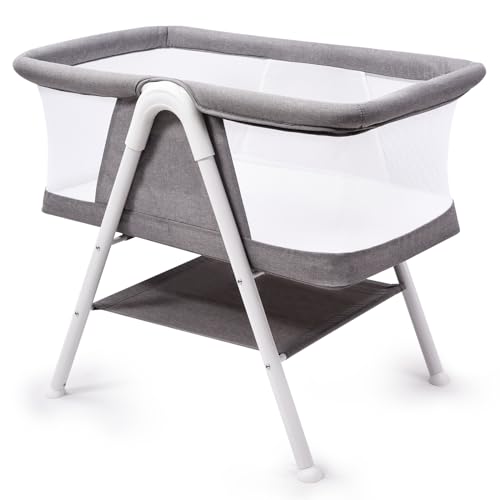What's Next In Baby Cot Bed
페이지 정보

본문
The Ultimate Guide to Choosing a Baby Cot Bed: Safety, Features, and More
When it concerns inviting a new baby, among the most important purchases moms and dads will make is a baby cot bed. This vital piece of furnishings is not just where a baby will sleep; it's also an area of convenience, security, and security. Provided the wide range of options offered on the marketplace today, making a notified choice can be overwhelming. This guide intends to streamline the procedure by covering necessary features, security standards, types of cot beds, and much more.
Table of Contents
- Introduction
- What is a Baby Cot Bed?
- Security Standards
- Types of Baby Cot Beds
- 4.1 Traditional Cots
- 4.2 Convertible Cot Beds
- 4.3 Portable Cots
- Secret Features to Consider
- Picking the Right Mattress
- Establishing the Cot Bed
- Frequently asked questions
- Conclusion
1. Intro
A baby cot bed acts as a devoted sleeping area for infants and is created to provide convenience and safety. As new parents browse the various options readily available, it is vital to comprehend the various kinds of cot beds, security standards, and vital features to make the very best choice.

2. What is a Baby Cot Bed?
A baby cot bed is a customized furniture piece where babies sleep. Unlike routine beds, cot beds are specifically created for babies and supply a safe environment for them to rest. They generally feature high sides to prevent babies from falling out and frequently included adjustable mattress heights to accommodate a growing child.
3. Security Standards
When selecting a baby cot bed, safety should be the primary factor to consider. Here are some important security requirements to remember:
- Certification: Ensure the cot bed fulfills nationwide and worldwide safety standards, such as the ASTM International and Consumer Product Safety Commission (CPSC) regulations.
- Slat Spacing: The distance between slats must not exceed 2 3/8 inches to avoid the baby's head from slipping through.
- Stability: Ensure that the cot bed does not wobble or shake.
- Non-Toxic Materials: Check for non-toxic surfaces and materials to ensure the baby's security.
4. Types of Baby Cot Beds
The market offers various types of cot beds, each catering to various requirements. Below is a summary of the most typical types:
4.1 Traditional Cots
Standard cots are standalone furniture products developed specifically for infants. They usually feature fixed sides and multiple adjustable bed mattress heights.
4.2 Convertible Cot Beds
Convertible cot beds can be changed into young child beds, permitting for extended usage. This type is a cost-effective choice as it grows with your kid.
4.3 Portable Cots
Portable cots, likewise understood as travel cots or playards, are light-weight and developed for families on the go. They can be quickly put together and dismantled for travel.
5. Secret Features to Consider
When picking a cot bed, parents should think about the following functions:
- Adjustable Mattress Height: This feature permits reducing the mattress as the baby grows, making it simpler for parents to raise the kid.
- Product Quality: Look for a cot bed made from durable, non-toxic wood.
- Safety Features: Some cot beds include rounded edges and extra security locking systems.
- Reduce of Assembly: Check if the cot bed requires very little tools for assembly and how easy it is to take apart.
- Storage Options: Some cot beds come with integrated drawers for saving baby essentials.
6. Picking the Right Mattress
The right mattress is vital for your baby's sleep quality. Here are some ideas for choosing an appropriate bed mattress:
- Firmness: A bed mattress needs to be firm adequate to prevent the baby from sinking in unfathomable, decreasing the risk of suffocation.
- Breathability: Opt for breathable materials to ensure appropriate air flow.
- Water-Resistance: Consider waterproof covers for easy cleaning and hygiene.
7. Establishing the Cot Bed
Setting up the cot bed properly is essential for safety. Here are steps parents must follow:
- Choose the Right Location: Place the Sale Cot bed far from windows, cords, and other potential hazards.
- Check the Height: Adjust the bed mattress height based on the child's age and movement.
- Get rid of Extras: Avoid putting pillows, blankets, or packed toys inside the cot bed when the baby is sleeping.
- Inspect Regularly: Regularly check all parts and screws for wear and tear.
8. Frequently asked questions
Q1: At what age should a baby transition from a cot to a bed?
Most children transition to a toddler bed between 18 months to 3 years, depending upon their development and specific needs.
Q2: How can I ensure my baby sleeps safely in their cot bed?
Ensure the cot is free of soft bed linen, toys, and anything that might block the baby's breathing. Follow all security guidelines carefully.
Q3: Is it essential to have a separate nursery for the cot bed?
While numerous parents select to have a different nursery, it is not a necessity. As long as the cot bed is in a safe and quiet environment, it can be placed in the moms and dads' bedroom.
Q4: When is it safe to decrease the mattress?
Typically, the mattress ought to be decreased when the baby can pull themselves up or when they can sit separately, typically around 6 months.

9. Conclusion
Picking the ideal baby cot bed is an essential element of preparing for a brand-new arrival. Parents must focus on safety, performance, and quality, ensuring that the cot bed satisfies their household's distinct requirements. By taking the time to research study and understand various kinds of cot beds, parents can provide a safe and comfy sleeping environment for their kid to thrive.
With mindful consideration, parents can guarantee that the cot bed is not just a piece of furniture, however a sanctuary where their baby can sleep soundly during those essential early years.
- 이전글휴대폰정보이용료소액결제 (010-9489-1116) 카톡 N1116 휴대폰정보이용료소액결제 25.07.27
- 다음글작업대출후기! 【텔문의 GD684】 작업대출후기 무직자대출 비상금대출! 25.07.27
댓글목록
등록된 댓글이 없습니다.

